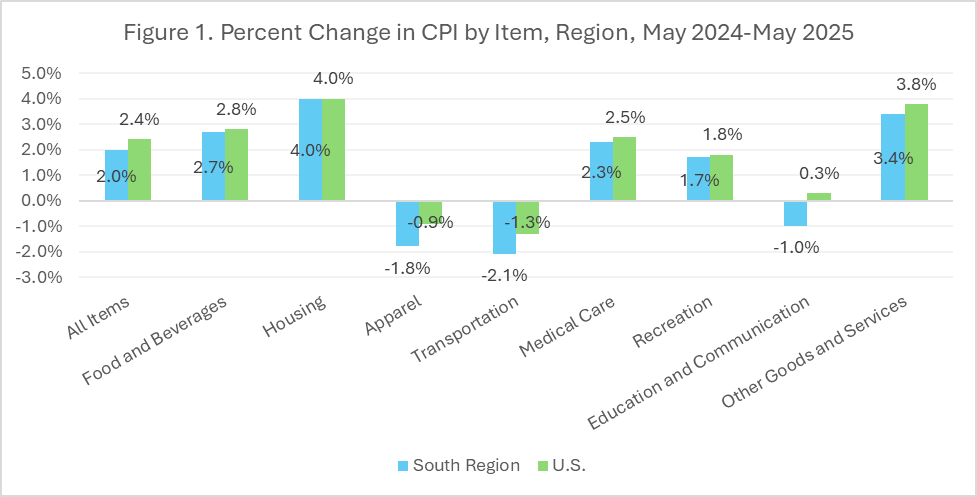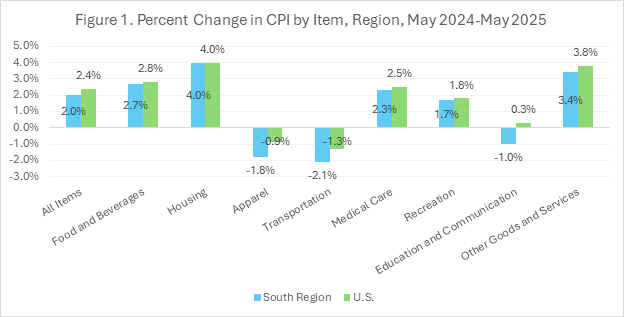South Region Reports Slower Price Growth in May 2025
By Lainey Stalnaker, Data Analytics Writer

The Consumer Price Index (CPI), published by the Bureau of Labor Statistics (BLS) each month, measures the average change in prices paid by urban consumers for a broad range of goods and services—including food, energy, housing, transportation, medical services, recreation, and education.[1] The percent change in the CPI year-over-year is the most common measure of inflation in the United States. The CPI is available for the U.S. and specific regions, including the South.[2]
In May 2025, the U.S. CPI for all urban consumers increased 2.4 percent from May 2024, but the South region CPI increased just 2.0 percent, in line with the Federal Reserve’s target rate. When broken down by item, most goods and services showed slower price growth in the South region than the U.S. overall. Housing was the sole exception, as prices rose to 4.0 percent in both the U.S. and the South. See Figure 1 for a breakdown of changes in CPI by item in the U.S. and South region.

The CPI reached a peak in June 2022, rising 9.8 percent in the South and 9.0 percent nationally. For most of the last three years, South region CPI growth outpaced U.S. CPI growth. But in August of 2024, inflation slowed in the South enough to fall below the U.S. average, where it has generally stayed (see Figure 2). After a period of rapid increases in the prices of basic goods, inflation has cooled significantly, and the prices of some goods are now falling year-over-year, pointing to stabilization of the market for everyday goods.

[1]https://www.bls.gov/regions/southeast/cpi-summary/ro4xg01a.htm
[2] The South region comprises Alabama, Arkansas, Delaware, District of Columbia, Florida, Georgia, Kentucky, Louisiana, Maryland, Mississippi, North Carolina, Oklahoma, South Carolina, Tennessee, Texas, Virginia, and West Virginia.
